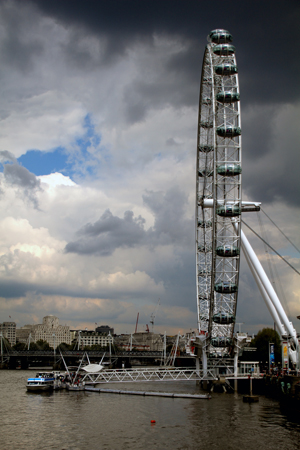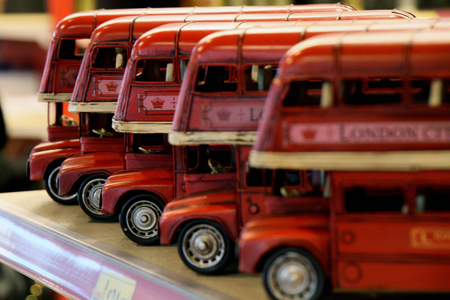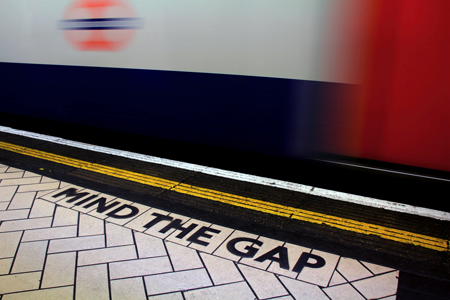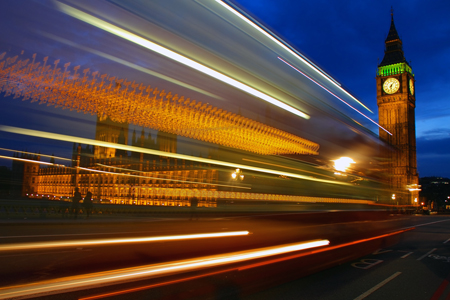Tamron wrote an article about my photography sing their 18-270mm lens. Check it out below...How to Photograph the Bustling Beauty of LondonAndy Lopusnak hops on double-decker buses (and minds the gap!) to document the iconic city of London with his Tamron 18-270mm VC lens. |
Article by Jenn Gidman. Images by Andy Lopusnak
|
After San Francisco photographer Andy Lopusnak is done covering NFL football games and the Final Four for CBS Sports every April, he banks his accumulated frequent-flier miles and journeys around the world with his wife. “She hates when I’m gone during the work season, but she loves when it’s vacation time!” he laughs. “We’ve been to Rome, Amalfi, Venice — and one of our favorite recent trips was to London.”
|
Before he even booked his ticket to the land of Beefeaters and double-decker buses, Andy knew that he was going to need a versatile lens that he could carry around on all his hop-on, hop-off trips around the British capital. “The year before my London trip, my wife and I had gone on vacation to Eastern Europe, and I looked like a guy on the sidelines of a football game: I had my utility belt, three lenses … I looked like Batman! Plus, I couldn’t even hold my wife’s hand as we walked around. I had seen samples of images taken with the Tamron 18-270mm VC lens and knew I had to have it. The quality of this lens is outstanding, and it’s now my main walkaround lens when I travel. I’m able to carry it around hanging on my right side all day, while I hold my wife’s hand with my left hand. It keeps the romance in my marriage!”
|
Read on to see how Andy documented his trip to the bustling city of London, including his tips on time-lapse photography, incorporating dramatic skies into London cityscapes and capturing famous landmarks like Big Ben and the Tower of London after the sun goes down.
|
Map out your photo ops before you go
When you’re traveling to a place like London, I recommend trying to get those postcard pictures, even though some people don’t like to do that. Sure, I can just buy the postcard, but I’d rather say I got it myself. |
What I do before I even get on the plane is go online to photo-sharing sites such as Flickr or PBase and look at other people’s images from the location I’m headed to, especially if I’ve never been there before. I’ll type a location into Google, find the images for that place, then download the images to my phone or iPad and take them with me.
|
Another thing I’ll do when I land at the airport of my destination city, before I even get my bags or a rental car, is stop off at one of the souvenir stands and check out all of the postcards. If I see any images I really like, I’ll buy the postcards (the stand owners don’t always like it when you start taking pictures of their postcards). If it doesn’t say where a particular building or place on a postcard is, I’ll actually drive around looking for it! Once I find it, I enter it into my phone’s Map app so that if I get a chance to go back to that city, I can easily find it again.
 |
Tell the story of a city through its patterns, lines and details
Of course you want to try and get those iconic landmarks, like Big Ben and the London Eye Ferris wheel, but it’s also fun to scope out smaller details that really say, “This is London.” I’m always looking for unusual angles, symmetry, and repeated patterns. For instance, while the toy double-decker buses I shot weren’t arranged the way you see in the image here, I saw the photographic possibilities and moved them around to create the picture I wanted. I shot them multiple ways, with a different selective focus for each one, and the final image is the way that worked best for me.  |
The same thing happened when I was in the Tube (the London subway system). Everywhere you go in the Underground, all you hear is “Mind the gap,” so I knew I had to capture something that mentioned minding the gap — it’s one of those quirky things you think about when you think about being there. I had my tripod with me, so I set my camera down low and just followed the edge of the subway platform, while still getting the detail of the tiling. I love when there are leading lines or a natural “S” shape that I can show like that. I had to work quickly, though, because it was rush hour and people were running all over the place.
 |
Enhance dramatic skies with HDR
The buildings and things you see in London are amazing in their own right, but for me, it’s all about the clouds. Getting a dramatic sky into the image along with these landmarks is my bread and butter. We did a lot of those hop-on, hop-off tours, so as soon as I’d see a great cloud scene, I’d jump off, shoot my three exposures in RAW, and then put the images through Photomatix software later. I’m usually pretty subtle with my HDR, but if the clouds are really dramatic, I might take it to the extreme.  |
Don’t forget to do some “night-seeing”
There’s so much to do in London during the day, but it really comes alive in the evenings. One of the most interesting places to go after the sun goes down is the Tower of London — it makes it look even more mysterious. There weren’t many people around at this time. I took this shot of the structure in aperture priority with an 8-second exposure, at F/18, ISO 100. I like to put my nighttime images at least around that halfway point in terms of f-stops so I can get everything in focus.  |
The Tower Bridge is also beautiful in the evenings. Where I stood to get my night shots of the bridge was only four minutes from the Tower of London, which was convenient. I wasn’t getting a great reflection in the water, so I thought it would look better showing a little motion in the water. This was just a ½-second exposure at F/3.5. Of course, I wish there had been more clouds in the sky, but that’s just me!
 |
Experiment with time-lapse photography and video
I like to shoot video with both the 18-270 and the Tamron 17-50mm VC lenses. I also enjoy shooting time-lapse photography. In London, I was able to capture some interesting effects on the Tower Bridge and of Big Ben (there’s one, the final shot of one of my time-lapse videos where you can see the streak of a double-decker bus going by, shot at F/5.6). For my time-lapse photos in the evening, I’ll set the camera to aperture priority — that way, it maintains the exposure so it doesn’t look like it’s flickering. If you’re shooting manually and it turns from day to night, you won’t be able to get all those nice colors once you head into the blue hour.  |
Check out this time-lapse video of more than 2,500 individual images I put together while in London in 2010. Enjoy!
|
To see more of Andy Lopusnak’s work, go to http://andyspictures.com.
|
Tuesday, November 20, 2012
Tamron article about my photography
Subscribe to:
Post Comments (Atom)

No comments:
Post a Comment